| Umělec magazine 2007/3 >> BLOODY ART IN VENITIAN CREAM; FROM THE DIARY OF NATURALIST | List of all editions. | ||||||||||||
|
|||||||||||||
BLOODY ART IN VENITIAN CREAM; FROM THE DIARY OF NATURALISTUmělec magazine 2007/301.03.2007 Alena Boika | reflection | en cs de es |
|||||||||||||
|
This year, I was invited to Venice again to take part in the “Continental Breakfast,” an international forum for contemporary art curators. As the forum coincided with the opening of the Venice Biennale, I made a few changes to my speech and added the following introduction.
If I Had a Daughter If I had an adult daughter who was about to choose a profession, I would tell her: become a curator. Enter any more-or-less respectable university, pursue an education in the humanities, read some fashionable modern philosophers, and select some phrase you find significant and worthy of reflection; it is advisable that the quotation's author be among the most readable and well-known of the contemporary canon. That way, you can come across as a modest, well-read intellectual. That quote should contain some dialectics, some questions, and a contradiction. And it shouldn’t be long so that it can be remembered easily. Every which way you turn, you will meet artists whose works breathe life into this quote and visually embody it. Develop a project considering the basic rules of fundraising, which everyone should know nowadays. Apply for a grant, bring selected works and a pair of celebrities to an average gallery or museum. It is even better to organize an event in some exotic country or a small village: a publicity campaign should be well thought-out in advance. Provided that you keep working hard for one year, after two, you will become a famous and respected curator. You will be invited to the biggest art events such as the Venice Biennale. You will attend parties, meet tawny and sunburned people, carry on intellectual discussions, drink fine wines and sip champagne, eat oysters, and all that stuff. You will wear genuine leather boots in 35-degree heat, with a half-bored, half-lively je-ne-sais-quoi look walking side-by-side with guys wearing pink shirts, as you cast passing glances at the art works. Your life will be rich and diverse. You will be able to coordinate your schedule a year in advance in accordance with the premier events in Venice, Basel, Kassel, São Paulo, Istanbul, Athens, and Lyon. Perhaps it could be some exotic country like Russia, Ukraine, or Kyrgyzstan for the sake of diversity. However, you should never become an artist! They are rarely allowed to attend these events, even if they are invited to these beautiful cities filled with such alluring contemporary art. There are too many of them. Watching the thoughts about art influenced by a forty-minute sitting on a bench with the friendly company of Dmitry Gutov and David Riff) It's possible to say that there have always been openings and parties attended by an idle public flocking around one beautiful thing before ebbing in the direction of the latest trend. It seems, however, that it has never been on such a large scale, never seemed so soulless an industry of repeated ideas, artifacts and names. The problem is that everybody knows how to become an artist and to create what will be demanded by a contemporary curator. The scheme is simple and reminiscent of How to Become a Curator (see above). Contemporary art, once borne from protest and outrage, provocations and a willingness to shock the fed-up public, has become one of the major tools for entertaining the same public. It is fashionable to participate in it, and prestigious to spend money on it. Everything, even the most radical and protesting spectacles, gets immediately turned into a brand ready for purchase. It seems there is very little that cannot be branded. The secret is just as simple: surround it all with secrecy, shut off any free access to presentations, print elegant invitations on white cardboard, invite a pair of celebrities and voila— a new ready-to-use product. Restricting access to a very limited elite is a prerequisite and an integral part of any multilateral deal. Some art comes with this prefab formula as a multicolored aesthetic makeweight: either artifact or, less often, some artistic gesture or statement. Like in ads, or some mundane supermarket, or membership in some club – by buying it, eating, drinking, participating in it, you get satisfaction by recognizing your own individuality of belonging to that elite, the artistic circle, and the “mighty of the earth.” … A Brief Lyrical Digression about a Golden Dress To illustrate, one case in particular from Russia occurs to me. It was during Art Moscow 2007, or even before, during the Second Moscow Biennale (March 1-April 1, 2007), that the public took note of a new star. It shined so bright and aggressively that it was impossible to ignore. First, the very fact that this particular star rose up to the heavens of contemporary art was entirely unexpected, despite credentials industriously described in her resumé. Second, the works defined as Actual Mobilography—a collection of photographs of friends taken by the star and colored with the help of a cell phone camera—caused some bewilderment, to put it mildly. Third, the vim and rate of their presentation to the public—from distribution of leaflets with a picturesque biography to the rush to Venice—inspired the curious to investigate. That star was Julia Milner. An ex-model born in the heartland of Russia, Julia left for work abroad, and eventually came to realize that she was a photographer rather than a model. She married up (so to speak), and changed her ordinary and unpretentious name, Bochkova, into a significant Milner. The public disagree here as some believe that her name, Bochkova, is a slightly altered version of Bychkova and thus, Julia could be a daughter of the famous Vasily Bychkov, director of Moscow’s Expopark, that huge pavilion where Art and Arch Moscow and other loud and expensive events have taken place. More envious skeptics point at her husband, head of the board of the mail.ru company and member of the board of the Neftyanoy oil concern. It goes without saying that everyone is dying to know how an unknown beginner, whose merits before her debut as a Russian artist are somewhat dubious, could get into the elite worthy of representing Russia at the world-wide conference of arts. We won’t mention other participants even though there were many compelling discoveries. Julia’s project presented at the Venice Biennale was originally entitled Click I Hope, which conveniently had some commonality with the name of an old work by Andrey Bartenev, also Russian Pavilion’s participant, Say I Love You (the Moscow Biennale of 2005) and the recent I Believe by Oleg Kulik (not a participant, but, a star of national importance). We could delightedly wander the labyrinth of eternal Russian sensations, which have suddenly assumed an unprecedented expressiveness against a background of unexampled commercialization of all the fields, and art in particular, but, it would be best to appeal to mere observation. While Julia Milner “changes reflective paradigm into a strategy of action” (a citation from the press release), artists, rude and straightforward people, discuss burning issues, “Oh! Look, Julia’s wearing jeans! I guess, someone told her what an artist should look like. Yesterday, she wore a golden dress and naked ass; and now she fully looks like Diana Machulina – very, very pretty.” The End of Lyrical Digression. Continuation The crisis of overproduction is obvious and it is against this background that really talented works are produced, and there are not a few of them; but, someone lacks for time and others for wish and there is a need to seek out these art works. Ivan Mecl, publisher of this magazine, bitterly exclaims, “Where are all the philosophers and writers, intellectuals and thinkers who’d hurry to get to exhibitions, who might seek out and find new grains of truth for their works there?” They are not there because they don’t have time to elbow through all those pink shirts and boots, through all the iterations and banalities towards this truth. The art is accompanied with longer and longer texts, the length of press releases increases and the volume of texts used in the works grows daily. Even if you study detailed explanations of a work you are unlikely to understand what the thing is about. And what chance is there that the text, a handwritten patois of English and the artist’s native tongue, which covers a fifteen meter wall between floor to ceiling, will be read by anyone? Hence, the chance that all the texts will be read, all the videos watched, and all allusions and connotations grasped by at least one half or one third of the viewers, is depressingly yet inevitably slim. I no longer admire, as I used to, the astuteness and trained eyes of the internationally known curators. Before, I believed that one should have special professionalism and experience in order to make determined critical remarks about the entire Biennale after a quick run around major expositions—the Arsenale, and a number of Giardini pavilions, the central ones, as a rule, such as the Italian, British, and German pavilions. These remarks are not as self-evident or unequivocal to me anymore. Take the three thick volumes of the Venice Biennale Catalogue and browse through them. Will you gain any impression to form some basis for any constructive conclusion? Unlikely. And these are just books! Not to mention all the real exhibitions dispersed throughout the city, and the fact that there is more than just one island in Venice! This year, there were 76 national pavilions, let alone 34 parallel events included into the Biennale’s official agenda. Most star guests, curators and artists only come for the first three days of non-stop parties and openings. Few can afford staying any longer. Can you imagine how someone could see 76 plus 34 exhibitions in three days? One could more-or-less make any sense of it or, at least, briefly by reviewing its textual part. No, I mean just to see them. I cannot imagine that. I had eight days provided by the Italian Embassy in Prague. Nothing special: I had been given the standard eight days, previously as a Belarusian resident, in 2005. As a special irony of the situation, the Italians issued me a multi-entry visa so that for eight days I could enter and leave the country as I pleased. Perhaps there was a deliberate intent to keep my impressions of Venice fresh. Of my eight days, two were spent traveling and another two at a conference. I extend my sincere gratitude to the organizers; indeed, without their invitation my present irony would not have been possible. So, the compressed time-period forced me to make the most efficient use of my daily routes in order to see as much as possible. I saw a lot, but was depressed by both the hectic pace, and the impossibility of visiting all the exhibitions. Departing, I thought how much more I could do, see, read, analyze and write had I been allowed at least a monthor better, two. Anyway, in that case the opportunity would have enabled me to draw broader conclusions concerning the Biennale as a whole. I don’t have an opportunity to conduct such an academic-artistic experiment. Of course, it is a theoretical agenda, as I assume that nobody would allot at least two months of their own life exclusively for viewing and analyzing the Biennale in full to produce a viable reflection and clearly thought-out reviews. But I prefer to rely upon my own brief observations and conclusions, and do not pretend they are global, thorough, or universal. My two leftist friends artist Dmitry Gutov and David Riff, a translator with a highly refined artistic thinking, are both Biennale participants. They spent most of their time seated on a Giardini garden park bench gazing with sick pleasure at crowds of freaks who were making fantastically subtle comments—a spectacle I can only compare with Animal Planet TV. In the process of watching, David Riff gave birth to the phrase, which is entitled to be immortalized: “Contemplation opened new reservoirs of anguish and sorrow within me.” Africa: Your Right to Show Political Correctness One of the most contradictory pavilions presented as part of the Venice Biennale was "Africa — Check List Luanda Pop." Its main objective was not that novel leitmotif: struggling for the right to self-determination and self-expression, for the right to be visible against a background of the eternal “white man.” Any discussion of political correctness has already long since been inverted. The pavilion walls are decorated with portraits of leaders who struggled for the rights of Africans in different eras. Numerous visitors attempt to emphasize their sincere interest and lack of racial prejudice as a flood of them pour into the spacious pavilion, get their pictures taken against the works by African artists who currently reside all over the world. The slice of contemporary African art of the last fifteen years still instills some embarrassment, inspired mainly by the mass-propaganda surrounding the pavilion. “Africa’s Debut” with its eternal right to self-determination, was mentioned by all the leading new agenciesyet in most cases not a word was said about works or authors, just dull facts cut-and-pasted from the press release. As an exception I would like to mention at least one work that drew my attention, by an outstanding young artist named Tracey Rose, whose video projections were presented in Venice in 2001 at the 49th Biennale (by the way, back to the African continent’s “debut,” it should be mentioned that almost all the participants are famous artists). The work consists of a text written in dark red letters, apparently on pink canvas, featuring a phone conversation between a man and a woman. The word, tokoloshi catches the eye. Tokoloshi is an evil spirit about whom the woman complains to her interlocutor. According to her doctor, the spirit stays inside her, preventing her from becoming pregnant. The woman incorrectly pronounces the word Kenya; the man corrects her. To all appearances he is a foreigner—he does not know what muti (a traditional medicine in South Africa) means—and he mocks the woman’s erotic dreams instead of believing in Tokoloshi. The woman says her heart is full of grief as she’s getting older, will turn 30 soon, and if she does not have another baby, her husband will leave her. It is a touching, subtle and multi-layer work; one begins to understand profoundly only after very attentive reading and brief research, including a search for Tokoloshi and muti on Google—the only way of expressing intellectual political correctness. One Evening, Listening to Mozart Loud, unbearably sweet and so marvelous, I suddenly thought that it was just like the Venice Biennale – so beautiful and cajoling love, admiration and a sinking heart. But that’s too much to bear. I want to stop it, break it off and run away—at least for a while—in order to have a look from the outside. A pause in the music is music as well. For me, the Biennale lacked such pauses. A crescendo cannot and should not be continuous; otherwise it turns into an insufferable cacophony. One of the works that the public adored was Delete Beatles (Yukio Fujimoto, Japan). A brush with metal bristles easily runs around a vinyl disc featuring the best super pop idols, and erases the tears and delights of the masses. Nearby, there is a work of the same artist: Ears with Chair—two pipes, with a space to sit in between. All sat down with enthusiasm, listened, smiled confusedly and feigned hearing something. They probably expected to hear the Beatles, but there was no music, or anything at all for that matter. The purpose of the work was to force people to listen and, possibly, to let them hear something. The anticipation of a sound is greater than music. About Beauty and Blood Lust An inscription, among piles of rubbish and garbage bags scattered by predatory albatrosses while taking time off from ripping apart and devouring San Marco pigeons, is simple: “I Love My Family.” Such is the poster of the Estonian Pavilion entitled Loser’s Paradise (by the way, the name of the First Roma Pavilion was Paradise Lost). The hero (artist Marko Maetamm) makes an absolute of the eternal conflict between family and art. And after suffering for some time just to observe the decencies, he kills them, fucking everyone with some aesthetic voluptuousness, somewhat incomplete refinement, and poorly worked sensitivity. A brief digression about inclinations for beauty and blood lust would be appropriate here. These two needs have always been explicit, albeit taboo to depict. By now it has turned into a habitual norm. The most “sincere” in this regard was the Cypriot Pavilion, which reminded me of the Belarusian Pavilion of 2005, a project whose documentation failed to pass censorship—a song of my heart. Pictures, normal in size, as an average viewer used to describe what he can see without going into details. And in the pictures – The Elysian Paintings: Cypriot fruit against, of course, blue sky, and women’s hands, and flowers (author – Mustafa Halusi). I can’t help but remember the words by Ron Sluik, a Dutch artist, who has been living in Moldova for several years and who continues to work with young artists in Europe. He was extremely emotional speaking about his students' inclination toward beauty,a tendency so natural that it cannot be called glamour. Ron was so embarrassed and puzzled by such tendencies that he began to produce big works with big flowers. Having only read an article by Denise Robinson in the Cyprus pavilion catalogue, where three pages were filled with the names of Immanuel Kant, Giorgio Agamben, Jalal Toufic, Samuel Beckett, Slavoj Žižek, Salvador de Madariaga, Raymond Chandler, Jacques Derrida, Sigmund Freud, Georges Bataille, Roger Caillois, Elaine Scarry, Andre Bazin, Gaston Bachelard, Walter Benjamin, Charles Baudelaire, Andrey Tarkovsky, Jean Baudrillard, and Nelly Richard – I hope I haven’t missed anybody – you can understand that it is not as easy as it may seem; behind realistic beautiful flowers, political allusions are hidden. Dear reader, if the afore-mentioned names do not convey much to you and you don’t have time for a thoughtful, rational, and thorough reading of “appropriate literature,” then enjoy beautiful fruits and flowers. You may consider it all to be kitsch, but that’s okay, considering the artist himself concurs. However, such temporal beauty is only for the average visitor. The sophisticated, glamorous public particularly adores the aesthetics of war, abandoned and ruined buildings, suffering, violence, murders, and terrorism. The public’s obsession has been captured by Adel Abidin’s Welcome to Baghdad, represented as part of the Norwegian Pavilion. Here are some brief extracts: Extra tips for Suicide bombers believe that practicing Jihad in the morning means they can eat breakfast with the prophet Mohammed. If there is an explosion in your vicinity, DO NOT remain an onlooker. Above all, DO NOT run or you will be targeted as a terrorist. It is suggested that you hurt yourself in some way so that you will look like a victim and be taken to the hospital. A Brief Familiarizing Tour of the Venice Biennale To provide the readers with a more solid impression of the event that I have critiqued, I would like to briefly introduce some of the pavilions that I consider the most important. - Holland. Citizens and Subjects (artist Aernout Mik). This project is all very endearing in an intellectual way. About refugees and (illegal) immigration, it is of current importance, profound, and installed “in life” for a while on floor-mats or sit down on an iron bed. It seems that even a tiny “view from the window” of the backyard is a part of the installation. - Poland: 1:1 (artist Monika Sosnowska) all to see the history of arts. It is easy to read and understand the fine idea of the construction, which is simply described in a press release. It is quite lovely. - France. Take Care of Yourself (artist Sophie Calle). The artist is an indisputable favorite of the public this season. She became famous for announcing a competition for a curator to represent her at the Venice Biennale (Daniel Buren was chosen out of 200 potentials). The pavilion was especially interesting for women and men who wished to watch and understand the female psyche. Whimsical, this pavilion was ironic yet carried a subtle optimism. - China. A very relaxed pavilion, especially its “mobile” part: a white inflatable marquee on a lawn where you can sit or lie in air-conditioned coolness and savor animated beauties and computer toys. This was as relaxing as a Biennale parallel project called: - Aniwaniwa. This oasis was probably discovered by few because it was situated off the beaten path. The project by the Italian research institute and the New Zealand Museum involved a huge old building; you enter into near-complete darkness filled with mystic sounds. When your eyes adjust, you begin to discern two rows of mattresses, lie down, and watch hemispheres hovering somewhere above. Watching the video, you don’t think at all about Pacific islands submerged underwater, forcing people to migrate (Maori). - Hong Kong. The most mystical pavilion, where a play, Map office by Laurent Gutierrez and Valerie Portefaix, begins as soon as you enter the courtyard filled with parrots sitting over steaming sea-shells. The catalogue states that they talk, but, while I was there they kept silent. I guess they got tired after all. - Norway. The most useful and interactive pavilion. Neither toilets, nor the words liberté, égalité, fraternité written on them are a novelty. But together they drew perpetual public interest. This project by Lars Ramberg was first exhibited in 2005 on Norway’s Independence Day. Before that, the idea of the Statue of Liberty, as the artist calls his work, won a prize and was cruelly criticized by the eminent members of the jury, some of whom left the jury to protest saying that it was impossible to support an object of art which allowed people to “shit on the national colors.” In spite of all those upheavals, the toilets were made in Paris, safely stayed in Oslo, and were brought to Venice for everyone’s enjoyment. This was one of the best pavilions, curated by René Block, as it did not engage visitors craving the refined sugar of pure art, but, rather, involved them in the events. - Singapore. This enticing pavilion, with the largest amount of small and big shining decorative objects, was salaciously set in the luxurious Palazzo Franchetti. - Hungary. This featured a fine video exhibit where, I noticed, all visitors watched each work from start to finish! - USA. This most appetizing of pavilions featured 317.5 kilos of dark-steel colored mint lollipops resembling bullet cases that were spread on the floor in a rectangle that was continually refilled. - Australia. My favorite pavilion, reminiscent of a side-show from my childhood was a hi-tech chamber of horrors by artist Callum Morton. You gawk in bewilderment at junk with no clear function; its surface is decorated with graffiti and riddled with holes. You enter to find a marble white hall permeated with dull light that evenly fills the well-defined space containing the steel doors of two humming elevators. You press the call button, the air grows noticeably cold, the light grows dim, the exit door does not open. Deathly horror and childlike delight ensue. About Fiora and Reflections (Instead of Epilogue) Venice is a mystical city, where something unexpectedly strange inevitably happens to me. I was taking the right vaporetto, yet suddenly found myself in the open sea, nobody spoke English and nobody could explain what was happening. With only the sea and sun around me, I realized that I was an hour late for my own speech. So, there’s nothing else to do but enjoy the situation. Even though I had a map and a false sense of confidence that I knew my way about the city I tended to get lost. On the first day of the forum, for which I also was late after having meandered my way there for more than an hour, I went outside for fresh air during a half-hour break. Determined not to wander from the palace, and feeling like a good student with noble intentions, I approached the Campo San Maria Formosa. All of a sudden, an extraordinarily beautiful lady approached. As if from some medieval Venetian fairytale, she looked like a splendid courtesan in her colorful flowing garments. With her sublime features and the discreet smile of an aristocrat from eight centuries ago, next to her, La Gioconda would look like an inexpressive goose. She asked me, “Can you come along with me? It’s not for long. You’ll be back in ten minutes.” Of course, I followed her without questions – I did not care where. We wound our way along narrow streets turning left, right, left again; some part of me thought that I’d get lost again, but I ignored my concerns. She unlocked an iron gate with a small black key; we entered a waterlogged courtyard and climbed winding stairs, upwards towards the high heaven. In bad movies, doors are opened one-by-one as the film director drags out time, unsure what to film; in my memory, every door opens too, but that’s because there was an unbelievable quantity of doors. It was endless, and time ceased to be meaningful. Atop that round Venetian house, constructed in the classical palazzo style with a deep courtyard, were a dozen lengthy high -ceilinged rooms with elaborately adorned walls. Each room was different: one white, another pink, the next green. Each overflowed with homespun carpets, paintings, glass, and colorful diaphanous cloth. I could only imagine that everyone had such fairy-tale encounters, and thanked my luck for finding mine. She beckoned me into a small, very pink room at the building's top and told me, “You may stay here if you wish.” The room was tiny, and the view through the window—what tourists usually take snapshots of: canals, gondolas, reflections in the water—took up most of it. But I could not stay in this fairy tale; I did not want it to turn into reality. Recently, I allowed myself to peek at a scrap of paper that she had given me, along with some herbs harvested from her numerous pots. I found her website and read that Fiora Gandolfi is a writer, artist and designer who migrates among her houses in Venice, Madrid and Paris when not traveling elsewhere. Her life as a whole—constructed in accordance with the principles of art that she lives, presenting pure art and producing it because of an internal need imploring her to do it—came across in sharp and gorgeous contrast to those many things that I could have encountered at the Venice Biennale. She has never been a part of it, and will never be. When getting lost in Venice, the key is to stop seeking, and then that which you seek will immediately come forth.
01.03.2007
Recommended articles
|
|||||||||||||
|
04.02.2020 10:17
Letošní 50. ročník Art Basel přilákal celkem 93 000 návštěvníků a sběratelů z 80 zemí světa. 290 prémiových galerií představilo umělecká díla od počátku 20. století až po současnost. Hlavní sektor přehlídky, tradičně v prvním patře výstavního prostoru, představil 232 předních galerií z celého světa nabízející umění nejvyšší kvality. Veletrh ukázal vzestupný trend prodeje prostřednictvím galerií jak soukromým sbírkám, tak i institucím. Kromě hlavního veletrhu stály za návštěvu i ty přidružené: Volta, Liste a Photo Basel, k tomu doprovodné programy a výstavy v místních institucích, které kvalitou daleko přesahují hranice města tj. Kunsthalle Basel, Kunstmuseum, Tinguely muzeum nebo Fondation Beyeler.
|







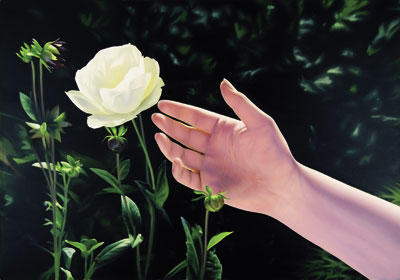
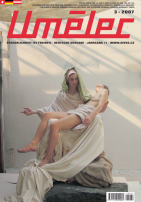



















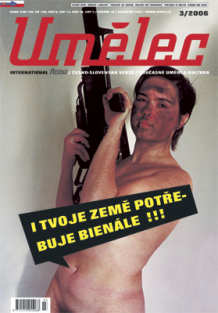




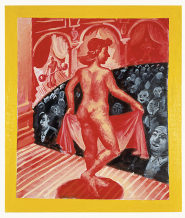
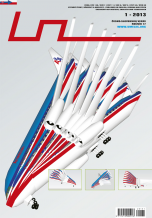
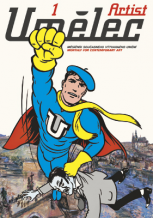
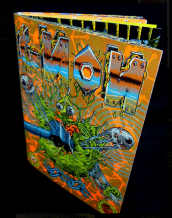


 We Are Rising National Gallery For You! Go to Kyjov by Krásná Lípa no.37.
We Are Rising National Gallery For You! Go to Kyjov by Krásná Lípa no.37.
Comments
There are currently no comments.Add new comment